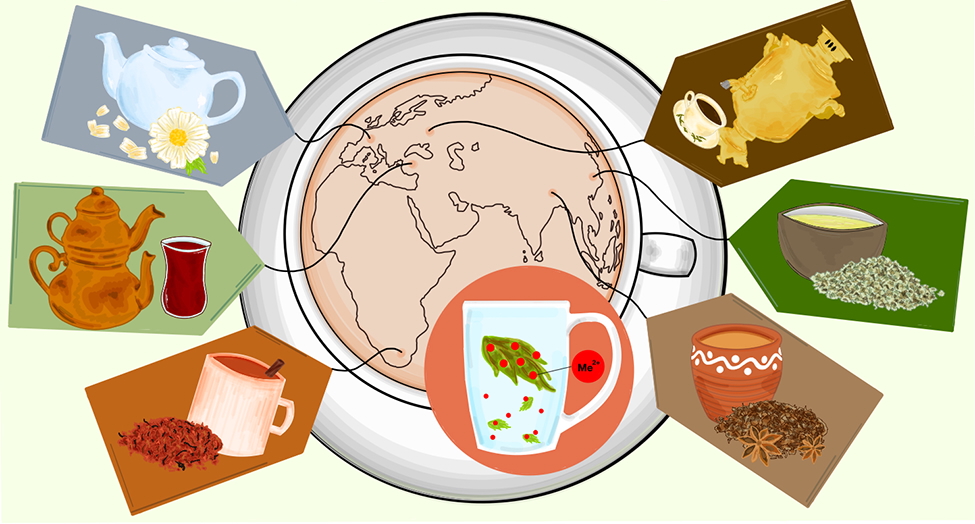Investigating the Adsorptive Properties of Tea
Studies on the health benefits of tea, the most consumed beverage in the world, have often focused on the effects of the chemicals released by tea leaves. However, the same physical properties that make tea leaves great at releasing flavor compounds into hot water also make tea leaves a great sorbent material. As a side project over most of my PhD, I investigated how factors during preparation affected the amount of metals removed from drinking water as a passive benefit to tea consumption. Working with two undergraduate researcher, we looked into both true and herbal tea varieties, bag materials like cellulose and nylon, and the effect of kinetic and thermodynamic adsorptive properties on metal remediation under real-world conditions. Performance modeling indicates that tea preparation indeed may provide meaningful metal remediation from contaminated drinking water across a wide range of metal levels, providing potential health benefits for populations at risk of metal toxicity. We invite further study by public health researchers into determining whether there are observable effects in reduction of heart disease, stroke, or other illnesses that are heavily correlated with metal toxicity in populations with elevated tea consumption.

This research was published in the American Chemical Society journal, Food Science & Technology. It has since received extensive press coverage in The New York Times, The Washington Post, The Guardian, The Times, Ars Technica, CNN, and others.
While press coverage can be very flattering, I think the main takeaways from this research are:
- Brewing tea in a conventional way (steeping loose leaf or bagged tea for a few minutes in a mug of hot water) will likely remove somewhere in the ballpark of 10-20% of the metal ions in your water, and potentially a commensurate amount of other toxins, although my research doesn’t specifically touch on those.
- Steeping time is the most important factor: the kinetics of the process really define what percent of the metal ions you will remove, since tea leaves have enough surface area to adsorb basically anything you could realistically have in your cup of drinking water.
- Basically any material will adsorb some amount of basically any toxic substance in water. The relevant question is “how much”. The dose makes the poison, so to speak.
- What’s unique about tea leaves is not that they have some special qualities that make them ideal for the adsorption of lead or other metals, but rather that humans have already been putting them into our water at high temperatures for thousands of years. It’s surprising that no one had previously thought to ask, “How effective has tea preparation been at removing bad things from our water?”
